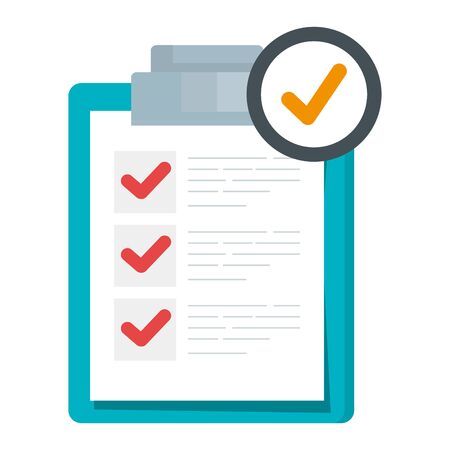Understanding Insurance Premiums
Before diving into how filing a claim can affect your insurance costs, its important to understand what an insurance premium actually is and how it works in the U.S. market.
What Are Insurance Premiums?
An insurance premium is the amount of money you pay to your insurance company, usually every month or year, to keep your policy active. Whether it’s for auto, home, renters, or any other type of insurance, paying your premium on time ensures that you’re covered if something unexpected happens.
How Are Insurance Premiums Determined?
Insurance companies use a variety of factors to decide how much you should pay for coverage. Here’s a simple breakdown:
| Factor | How It Affects Your Premium |
|---|---|
| Risk Profile | Your age, driving record, claims history, and even your credit score can impact your rate. |
| Coverage Amount | The more coverage you want (higher limits or lower deductibles), the higher your premium. |
| Location | Your ZIP code matters—areas with more accidents, thefts, or severe weather often have higher premiums. |
| Type of Policy | Different types of policies (liability only vs. full coverage) cost different amounts. |
| Discounts | Bundling policies or maintaining a safe record can help lower your costs. |
Why Do Insurance Premiums Fluctuate?
The price you pay for insurance isn’t set in stone. In the U.S., premiums can go up or down due to:
- Market Trends: If there are more claims being filed in your area (like after a major storm), rates may rise for everyone.
- Your Personal History: If you get a speeding ticket or file a claim, your risk profile changes—and so can your premium.
- State Regulations: Each state has its own rules about what insurers can consider when setting prices.
- Economic Factors: Inflation or rising repair costs can push premiums up across the board.
A Quick Example: How Location Affects Car Insurance Premiums
| City/State | Average Annual Premium* |
|---|---|
| Los Angeles, CA | $2,200 |
| Dallas, TX | $1,800 |
| Cleveland, OH | $1,100 |
| Burlington, VT | $900 |
*These are sample estimates and actual rates may vary based on individual factors.
This basic understanding of premiums helps make sense of why filing a claim might change what you pay for insurance in the future.
2. How Filing a Claim Affects Your Premium
The Typical Claim Process
When you file an insurance claim in the U.S., whether its for auto, home, or another type of policy, there’s a standard process that usually follows these steps:
| Step | Description |
|---|---|
| Incident Occurs | You experience an event (like an accident or damage) covered by your policy. |
| File the Claim | You report the incident to your insurance company, providing details and documentation. |
| Assessment | An adjuster reviews your claim, may inspect damages, and evaluates costs. |
| Payout Decision | The insurer decides if the claim is approved and how much will be paid out. |
| Settlement | You receive payment or repairs are authorized based on your policy terms. |
How Claims Lead to Higher Premiums
Filing a claim can directly impact your future premiums. Insurance companies in the U.S. use claims history as one of the main factors in determining risk—and your price. Here’s how it typically works:
- Risk Assessment: When you file a claim, insurers may view you as higher risk. This often leads to higher premiums at renewal time.
- Type of Claim Matters: Not all claims affect your premium equally. For example, at-fault auto accidents or multiple claims in a short period usually result in bigger increases than a single weather-related home claim.
- Claims Frequency: Multiple claims within a few years often trigger steeper hikes compared to just one claim.
- No-Claim Discounts: Some insurers offer discounts for staying claim-free. Filing a claim could make you lose this discount, causing your rate to go up even if the base premium doesn’t change much.
Typical Premium Impact After a Claim
| Claim Type | Possible Premium Impact (%) | Common Scenarios in the U.S. |
|---|---|---|
| Auto – At Fault Accident | 20% – 40% increase | Bumping another car, rear-end collision where you’re responsible. |
| Home – Weather Damage | 5% – 15% increase (varies by state) | Storm or hail damage; some states restrict premium hikes after natural disasters. |
| Auto – Comprehensive (Not at fault) | 0% – 10% increase or none at all | Theft, vandalism, hitting a deer—usually less impact on rates. |
| Multiple Claims (Any Type) | Up to 50%+ increase or possible non-renewal | Several claims over 2-3 years signal high risk to insurers. |
A Real-Life Example
If you have a clean driving record and then file your first at-fault accident claim, you might see your annual premium jump from $1,200 to $1,500 or more when your policy renews. If you file a second similar claim within two years, the increase could be even steeper—or your insurer might decide not to renew your coverage at all.
This is why many people in the U.S. carefully consider whether smaller claims are worth filing, especially when the repair cost is close to their deductible amount.

3. Types of Claims That Impact Rates Most
When you file an insurance claim, not all claims are treated the same by your insurer. Some types of claims have a bigger impact on your premiums than others. Understanding which ones can hit your wallet the hardest is essential for making smart decisions as a policyholder, especially if you’re self-employed and every dollar counts.
At-Fault vs. Not-At-Fault Accidents
The biggest difference comes down to whether you were at fault for the accident:
| Type of Claim | Description | Impact on Premiums |
|---|---|---|
| At-Fault Accident | You caused the accident (even partially). | Significant increase—insurers see you as a higher risk. |
| Not-At-Fault Accident | The other driver was responsible. | Usually minimal or no increase, but it depends on your state and insurer. |
Comprehensive Claims
Comprehensive claims cover damage not caused by a collision—think theft, vandalism, fire, or hitting a deer. These types of claims typically have less impact on your rates because they’re considered outside of your control.
| Claim Type | Examples | Effect on Premiums |
|---|---|---|
| Comprehensive | Theft, weather damage, animal strikes | Slight increase or sometimes none at all, unless you file multiple claims in a short period. |
Other Common Claims Affecting Premiums
- Bodily Injury Liability: If someone is hurt in an accident you caused, this claim will almost always lead to higher premiums.
- Property Damage Liability: Damaging someone else’s property (like another car or a fence) can also result in rate increases.
- PIP/MedPay Claims: Personal injury protection (PIP) or medical payments may affect rates depending on the circumstances and frequency of claims.
- Uninsured Motorist Claims: Usually has little to no effect on your premiums if you’re not at fault.
Summary Table: Claim Types & Rate Impact
| Claim Type | Typical Rate Impact |
|---|---|
| At-Fault Accident | High Increase |
| Not-At-Fault Accident | Minimal/None |
| Comprehensive (e.g., theft) | Slight/None (unless frequent) |
| Bodily Injury/Property Damage Liability | Moderate to High Increase |
| PIP/MedPay Claims | Mild to Moderate (depends on frequency/state) |
| Uninsured Motorist Claim (not at fault) | Minimal/None |
A Practical Takeaway for Self-Employed Individuals:
If you rely on your vehicle for business, consider the long-term cost before filing small claims. Sometimes it makes sense to pay out-of-pocket for minor repairs to keep your premium low and protect your cash flow.
4. State Laws and Insurance Regulations
If you’re running your own business or working as a freelancer in the US, understanding how your insurance premiums are affected after filing a claim is crucial. But here’s something many people overlook: where you live can make a big difference because each state has its own rules and regulations for insurance companies.
How State Laws Shape Your Insurance Premiums
Insurance isn’t regulated at the federal level—it’s mostly managed by state governments. This means everything from how much your rates can increase after a claim to what types of claims will impact your premium depends on local laws. For example, some states have strict limits on how much an insurer can hike up your premiums after a single accident, while others give insurance companies more flexibility.
Common Ways State Laws Affect Your Premiums
| State Regulation | Impact on Premiums | Example States |
|---|---|---|
| Rate Increase Caps | Limits how much your premium can go up after a claim | California, Massachusetts |
| No-Fault Insurance Laws | Your own insurer pays for certain losses regardless of fault; affects claim reporting and future premiums differently | Florida, Michigan, New York |
| At-Fault vs. Not-At-Fault Rules | Not-at-fault claims may not impact your premium as much—or at all—in some states | Texas, Illinois |
| Surcharges for Multiple Claims | Some states let insurers add extra charges if you file more than one claim in a set period | Pennsylvania, Ohio |
Why This Matters for Self-Employed Professionals
If you’re self-employed or operating under a 1099, these state differences can directly affect your business expenses. For instance, if you work in California, you might find that your insurance costs stay more predictable even after an accident. In other states, though, a single claim could mean a significant jump in premiums—and that’s money out of your pocket.
Tips to Stay Ahead of Premium Changes in Your State
- Check with your state’s Department of Insurance: They often provide consumer guides explaining local laws and protections.
- Ask your insurance agent: Agents licensed in your state should know how claims might affect your rates.
- Compare policies: Since companies interpret state laws differently, shopping around can help you find the best fit for your risk tolerance and budget.
- Keep good records: If you ever need to dispute a surcharge or rate hike, clear documentation helps.
The bottom line? Knowing the specific insurance regulations in your state gives you better control over your financial risk when it comes to filing claims and managing premium changes.
5. Strategies to Minimize Premium Increases
Smart Moves for the Self-Employed
If you’re self-employed, every dollar counts—and so does your insurance premium. Filing a claim can cause your rates to go up, but there are practical steps you can take to keep those increases in check. Here are some risk management strategies tailored for freelancers, contractors, and small business owners.
Risk Management Tips
- Increase Your Deductible: Opting for a higher deductible can lower your monthly premium. Just make sure you have enough saved up to cover it if you need to file a claim.
- Bundle Policies: Many insurers offer discounts if you bundle multiple policies (like liability and property) together. Ask your agent about package deals.
- Implement Safety Protocols: Put clear safety guidelines in place—whether it’s cybersecurity for remote work or workplace safety for on-site jobs. Insurers love seeing proactive measures.
- Keep Claims to a Minimum: Try handling minor issues out of pocket instead of filing small claims. Frequent claims are a red flag for insurers.
- Document Everything: Maintain thorough records of contracts, receipts, and communications. Good documentation helps if you ever need to dispute a claim or clarify details with your provider.
Practical Steps: Before and After Filing a Claim
| Step | Why It Matters | Action Item |
|---|---|---|
| Review Your Policy Annually | Your needs and risks change over time | Schedule a yearly policy review with your agent |
| Create an Emergency Fund | Covers high deductibles or minor incidents without claiming insurance | Set aside savings specifically for unexpected expenses |
| Negotiate With Your Insurer | Loyalty and good track record can mean discounts or forgiveness programs | If you have few claims, ask about accident forgiveness or loyalty discounts |
| Invest in Professional Training | Lowers risk of mistakes and accidents that could lead to claims | Pursue certifications relevant to your field; document completion for insurer records |
| Regularly Update Security Measures | Makes your business less risky in the eyes of underwriters | Install security systems, use updated software, or enhance physical protections as needed |
Quick Pro Tip:
If you do have to file a claim, notify your insurer promptly and provide all requested information quickly. Fast, transparent communication can help speed up the process and possibly soften the impact on future premiums.
6. When It Makes Sense to File a Claim
Deciding whether or not to file an insurance claim can be tricky, especially when you’re thinking about how it might affect your future premiums. Sometimes, it’s smarter to pay out of pocket, while other times, filing a claim is the right move. Let’s break down some common scenarios and what you should consider before making your decision.
Weighing Out-of-Pocket Costs vs. Premium Hikes
One of the first things to check is how much the repair or loss will cost compared to your deductible. If the damage is minor and close to your deductible amount, it might not make sense to file a claim since your insurer will only cover a small portion (if any). Plus, even a small claim can lead to higher premiums in the future.
Quick Comparison Table: Should You File?
| Scenario | Estimated Cost of Damage | Your Deductible | Possible Premium Increase? | Recommended Action |
|---|---|---|---|---|
| Minor fender bender, no injuries | $1,200 | $1,000 | Yes (likely) | Pay out of pocket |
| Major accident, significant damage/injuries | $15,000+ | $1,000 | Yes (almost certain) | File a claim |
| Stolen laptop from car | $900 | $500 | Maybe (depends on claims history) | If rare claim, consider filing; if frequent claims, pay out of pocket |
| Storm damages roof | $8,000 | $1,500 | Yes (possible) | File a claim |
| Tiny windshield chip repair | $200 | $250 | No impact if not filed; possible increase if filed repeatedly | Pay out of pocket |
Your Claims History Matters
If you’ve already filed one or more claims in recent years, insurers may view you as higher risk. This can result in even bigger premium increases or possibly non-renewal. On the other hand, if this is your first claim in several years and it’s for something major, most insurers are more understanding.
The Role of No-Claim Discounts and Surcharges
Many insurance companies reward policyholders who don’t file claims with discounts or “accident forgiveness.” Filing could mean losing these perks and facing surcharges for several years. Always ask your agent how a potential claim would affect your specific policy before moving forward.
Key Takeaways Before Filing:
- Add up all costs and compare them with your deductible.
- Think about how much your premium could go up—sometimes for 3-5 years after a claim.
- If it’s a big loss or liability situation (like injuries), filing usually makes sense despite the premium hike.
- If it’s minor damage near your deductible amount, paying out of pocket often saves money long-term.
- Your previous claims history can make a big difference in how your insurer responds.
- Don’t forget about possible no-claim discounts or accident forgiveness programs you might lose by filing.


